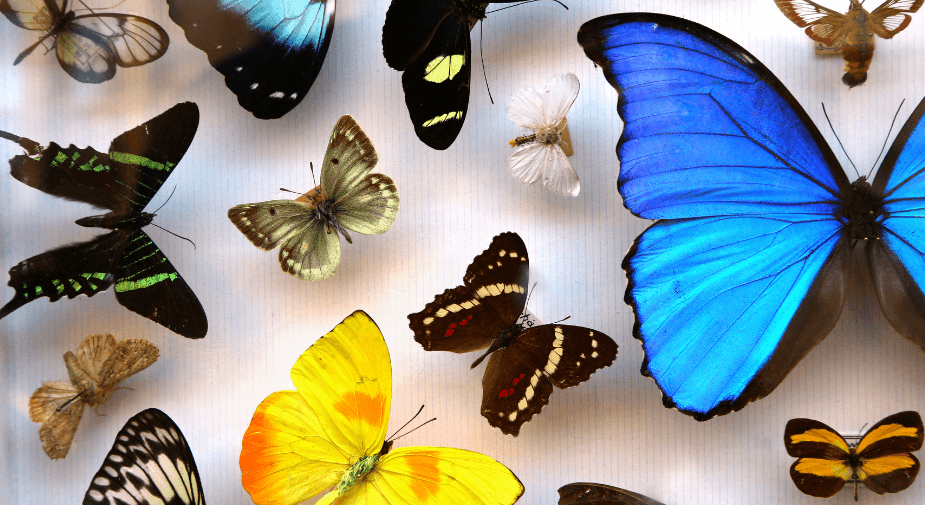PhD fellow: Let's make taxonomy a tool to preserve endangered species
Science is not value neutral. This also applies to something as fundamental as taxonomy, which can be structured differently depending on what it is used for.

Naming and dividing species is a fundamental pillar of biological science. But the way we categorize species has a significant impact on the practical work of conserving endangered species. So why not categorize the world's animals in a way that gives researchers the best possible conditions for saving species from extinction?
"Science is driven by values that are not just about achieving truth," said Lara Kristina Sabatier, a new PhD fellow at the Department of Science Education.

“Politics, funding strategies, personal preferences, and bias are constant factors in science.”
As part of the project “Tackling the Conservationist Dilemma", Lara Kristina Sabatier will investigate what happens if certain values are deliberately used to guide the structuring of a fundamental part of science such as taxonomy.
"We are at a point when conservation of species is a value that most people can get behind. We want to see what happens if we use that value in creating new knowledge," said Lara Kristina Sabatier.
No taxonomy fits all
The effort to preserve species can have many different goals. And you cannot definitively say which approach to taxonomy is best for preserving species, said Lara Kristina Sabatier.
"Imagine you have two ways of dividing species, where one model tends to divide animals into many species, while the other model creates more subspecies and fewer species," she explained.
"Quite pragmatically, you can say that if you want a species on the IUCN Red List of Endangered Species, it is clear that you will get further by dividing a population into several species and thus creating fewer animals in each individual species."
While that strategy can bring more attention to a vulnerable animal species, there are other conservation efforts that would find this taxonomy useless in practice, said Lara Kristina Sabatier.
"One way we try to keep an endangered species alive is by introducing new genes into a gene pool. And if you haven't divided your species in a way that looks at genes, you don't have a way to determine which group to draw on to strengthen the gene pool of the endangered species."
The project, that Lara Kristina Sabatier is a part of, focuses on assessing the risks for these populations depending on the kinds of values and classificatory choices that guide scientists. And in consequence, the kinds of policies that are then created out of the resulting knowledges.
Taxonomic anarchy
Not everyone is enthusiastic about the idea of letting a particular agenda shape how knowledge should be structured, said Lara Kristina Sabatier.
"There are those who see it as taxonomic anarchy," she explained.
"If you can just choose the taxonomy that suits you, a large company that wants to build in a nature area could easily argue that this will not affect any endangered species."
It is better to be transparent about the values we bring into science instead of pretending that we are the most neutral observers in the world.
The problem with that interpretation, according to Lara Kristina Sabatier, is that science can already be bent to an agenda, but that in that case, it can happen under the guise of being objective and neutral.
"After Trump and Covid, many have been concerned about the sanctity of science. But we must recognize that science is not value neutral. I think it is better to be transparent about the values we bring into science instead of pretending that we are the most neutral observers in the world."
The importance of flexibility
If you could force all biologists, researchers, and conservationist to adhere to the same taxonomy, it would undoubtedly ease some of the bureaucratic burdens around the work. And communication would be easier between groups because they always talk about the same species and subspecies.
But it is also a model that ignores the need for flexibility that researchers need in their work, according to Lara Kristina Sabatier.
"When researchers tried to figure out how mosquitoes spread malaria, it was only when they made a special grouping based on phenotypes that they could identify the group of mosquitoes that spread the disease. If we all classified mosquitoes in the same way, there is a good chance we would never have discovered how malaria spreads," she said.
Researchers need that type of flexibility in order to find answers to important questions. And that is why it is dangerous to try to control which taxonomy researchers use, said Lara Kristina Sabatier.
"To make science useful, sometimes you have to be very local and specific about how you do it. It would be nice if there was a way we could always use. But typically, there's a way that's best for a particular problem in a particular environment."
Contact
Lara Kristina Sabatier
PhD fellow
Department of Science Education, University of Copenhagen
lks@ind.ku.dk
+4535329531
